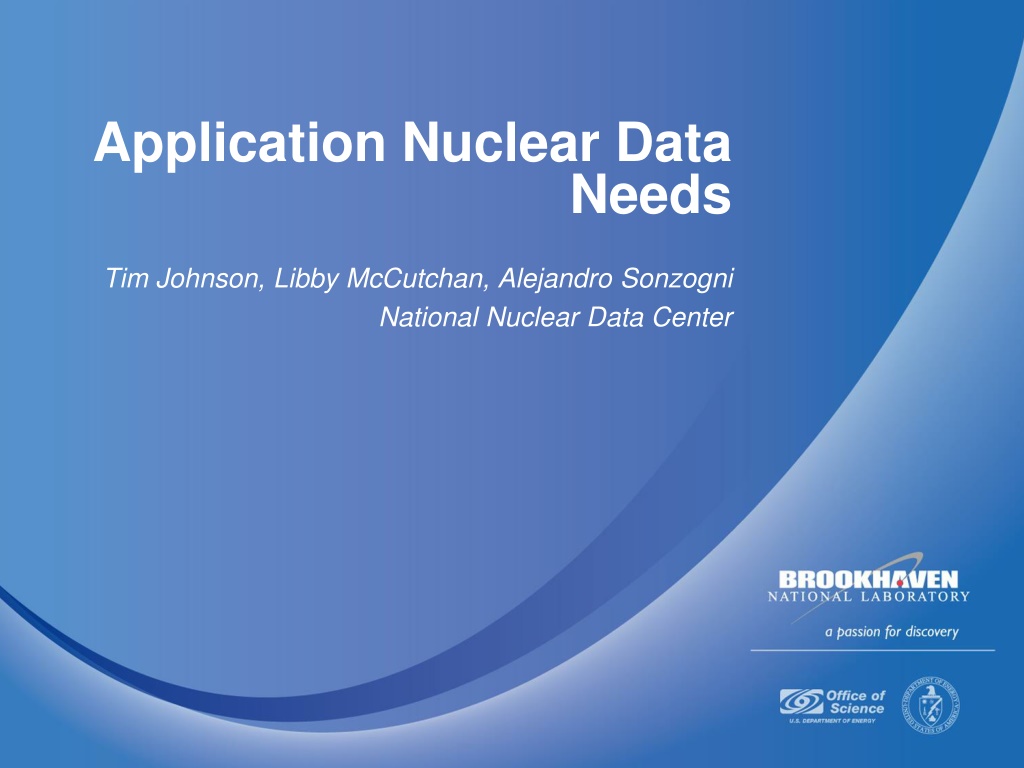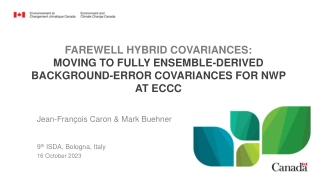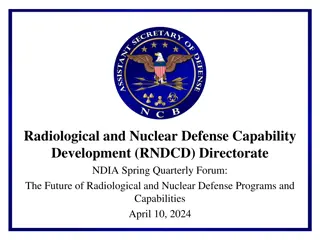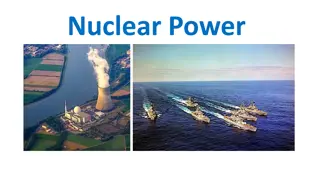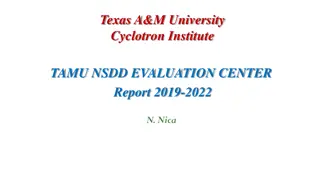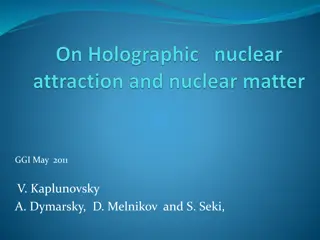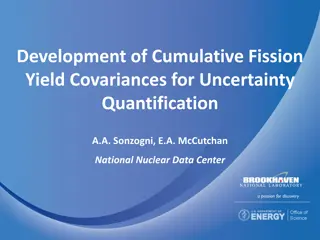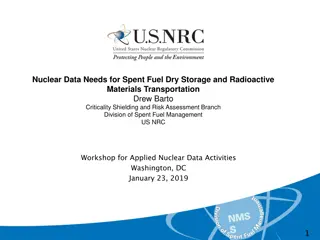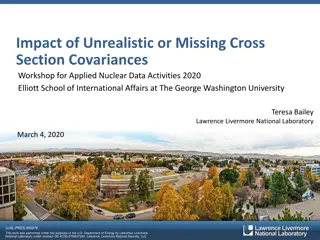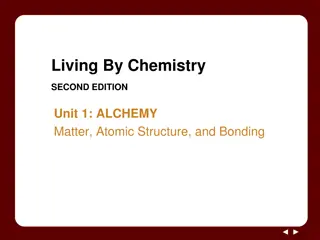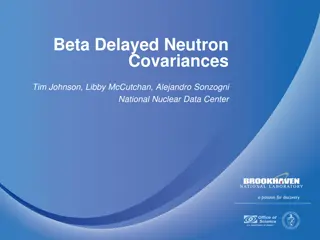Exploring Nuclear Data Needs and Covariances with Alejandro Sonzogni
In this collection by Tim Johnson, Libby McCutchan, and Alejandro Sonzogni from the National Nuclear Data Center, various aspects of nuclear data needs and beta-delayed neutron covariances are discussed. Topics include different radiation types, gamma decay heat, beta transitions, antineutrinos, and the impact of experimental values from places like ATLAS. The importance of accurate macroscopic measurements, the signal variations in anti-neutrinos, and the contributions from different nuclei with varying degrees of Z and N evenness are highlighted. Alejandro Sonzogni's research plays a crucial role in understanding nuclear data and covariances.
Download Presentation

Please find below an Image/Link to download the presentation.
The content on the website is provided AS IS for your information and personal use only. It may not be sold, licensed, or shared on other websites without obtaining consent from the author. Download presentation by click this link. If you encounter any issues during the download, it is possible that the publisher has removed the file from their server.
E N D
Presentation Transcript
Application Nuclear Data Needs Tim Johnson, Libby McCutchan, Alejandro Sonzogni National Nuclear Data Center
Different radiation types, different issues Gamma rays Gamma decay heat, forensics Beta transititions Beta decay heat, antineutrinos Beta delayed neutrons Delayed nu-bars All of them very correlated, macroscopic measurements need precise experimental values from places like ATLAS Impact of TAGS data (Greenwod et al, Algora et al) has been crucial. Beta Delayed Neutron Covariances #3 - Alejandro Sonzogni
Anti-neutrino Signal, neutrino spectrum x cross section 235,238U and 239Pu produce a different signal, in shape, maxima and multiplicity Beta Delayed Neutron Covariances #4 - Alejandro Sonzogni
NNDC calculations on the Daya-Bay signal shape = spectrum x cross section 235U signal has a shoulder at around 6 MeV F.P. An, PRL 108, 171803 (2012), Beta Delayed Neutron Covariances #5 - Alejandro Sonzogni
Following Loaiza et al. & Than Dat et al., the recommended delayed nubars (delayed average neutron multiplicity per fission) are plotted for a number of systems. Beta Delayed Neutron Covariances #6 - Alejandro Sonzogni
Chart colored by 235U fission yields, highlighted by Q n>0 Many n emitters have high fission yield values, in particular Br (Z=35), Rb (Z=37), I (Z=53) and Cs (Z=55) Beta Delayed Neutron Covariances #7 - Alejandro Sonzogni
Contributions from nuclei with different degrees of Z and N evenness Beta Delayed Neutron Covariances #8 - Alejandro Sonzogni
Contributions from nuclei from the Light and the Heavy fission fragments Beta Delayed Neutron Covariances #9 - Alejandro Sonzogni
Same plot as before, but for delayed nubars 238Np 235U 238U 232Th 241Pu 233U 239Pu 252Cf Odd-Z Even-N nuclides, such as 87Br contribute ~50-65%. Beta Delayed Neutron Covariances #10 - Alejandro Sonzogni
As before, but plotting lighter and heavier fission fragments contributions 238U 232Th Beta Delayed Neutron Covariances #11 - Alejandro Sonzogni
Another example, 147Nd decay A precise knowledge of the GS to GS I and 91.1 I is needed E =531.0 I =13.4 (3)% Cumulative fission yield=2.25% E =91.1 I =28.1 (7)% =2.03 I <0.15 % or I <5 % Beta Delayed Neutron Covariances #12 - Alejandro Sonzogni
Conclusions Precise Decay Schemes are needed for many neutron rich nuclides, including: a) TAGS data. b) Beta Shapes, beta absolute intensities, in particular ground state to ground state. c) Beta-delayed Neutron Probabilities and Neutron Spectra. d) Gamma energy and absolute intensities. Beta Delayed Neutron Covariances #13 - Alejandro Sonzogni
